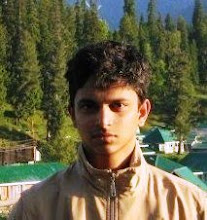Nigel Britto
The Mormon Tabernacle Choir, perhaps the world's greatest choral group today, was once described by Ronald Reagan as "America's Choir". To him, it epitomized the spirit of America. The 160-year-old choir, which is made up entirely of volunteers, was also called "a national treasure" by another US president, George H W Bush. In a country where the choral tradition is as strong as its military prowess, the Tabernacle choir's ability to constantly evolve its craft and stay ahead of the many hundred choirs in America is unmatched anywhere in the world.
India, on the other hand, is not a land of choirs. Its rich musical tradition focuses on the individual rather than choral prowess. Since 1950, Mumbai's iconic Paranjoti Academy Chorus has been India's best answer to the Mormon Tabernacle Choir. Like its American counterpart, the Paranjoti has a long, unbroken tradition, volunteer members, a dedicated conductor and a constantly evolving repertoire. As the flag-bearers of the choral tradition in India, the choir has toured the world extensively, to great response, and performs in a mind-boggling 22 languages, many of them Indian.
It's 8 pm at the majestic Chapel of Our Lady of Monte at Old Goa, and there's a gardi (crowd) at the door. This is a free concert, and the Paranjoti are performing here after over 40 years. Inside, people wait patiently for the recital to start;soon, two rows of men and women file in. The men are in dapper black suits, the women in purple saris. Even the Chapel's resident owl, who's usually hyper-active, knows it's time to be quiet, and sits peacefully on a ledge above the altar. At first glance, the choir looks like any other. And then they start to sing.
There is no amplification here, so the choir's extraordinary sound - rich in dynamics and extremely powerful - has no support. As the sound ricochets off the 400-year-old walls, it makes one think that this is what the angels surrounding god's throne in the high heavens must sound like.
The Paranjoti members are as varied as their repertoire. The youngest singer is 18 and the oldest close to 80. Its formidable conductor Coomi Wadia has been with the choir for over half a century, first as a singer and then its conductor and director of music. Some of the singers are students, some professionals, one is a vice-president of a multinational bank, one is a prominent HR consultant. Some are Christians, some are Parsees, some Goans, some Mumbaikars and some South Indians. What makes the choir's performance so incredible is the singers' ability to memorize entire presentations in different languages. In addition, they normally perform acapella (without instrumental accompaniment), as they did in Goa, and the absence of both accompanists and musical scores makes it even more challenging to hit the right notes at the right time.
The choir is named after its founder, Dr Victor Paranjoti, who led and groomed it till his death on February 1, 1967. A little later that year, the choir, under the baton of his protêgê Coomi Wadia, performed a tribute. During Paranjoti's lifetime, Wadia sometimes led the choir when he was unavailable, so in 1967, "I was unanimously chosen to lead, " she says. From then till the choir's most recent performance in Goa, Wadia has led the choir and, despite members drifting in and out, maintained a standard rarely seen in Indian ensembles.
Sitting on a bench inside the majestic stone basilica where her choir gave a short recital after Sunday Mass, she recalls her early days as conductor. "When I first took over, many people thought I wouldn't last, " she says. And if it hadn't been for her husband Nariman, who also sometimes writes music for the choir, she wouldn't. "I'm where I am today because of his constant support. Over the last 50 years, my life has revolved around the Paranjoti chorus, every decision I take has to bear in mind the choir, " she says. Although happy with the giant strides the choir has made, the constant turnover and the way members float in and out continues to be a source of concern.
Wadia also has another choir, Singing Tree, made up of young children. Some of these members eventually graduate into the PAC, like doctorin-training Ranzelle Fernandes and commerce student Freya Mazda. They're the youngest members of the PAC, have been so since 13, and are open in their admiration of their conductor. "I adore her, " Fernandes says. Both say "she's a perfectionist and it's a privilege to work with her". Another member, Christopher, who has sung with the choir for 25 years, describes Wadia as "a class apart".
In Goa, the choir started with a Konkani song, followed by original compositions, songs based on the Upanishads, Negro spirituals and innovative adaptations of popular hymns. Of late, many other Indian choirs have expanded their repertoire to Bollywood to garner new fans. But Wadia will hear none of it. "We're a choral group, " she says. "We'd rather bring people to our level than go to theirs."
This article was first published in The Times of India's Crest edition dated March 12, 2011.


No comments:
Post a Comment